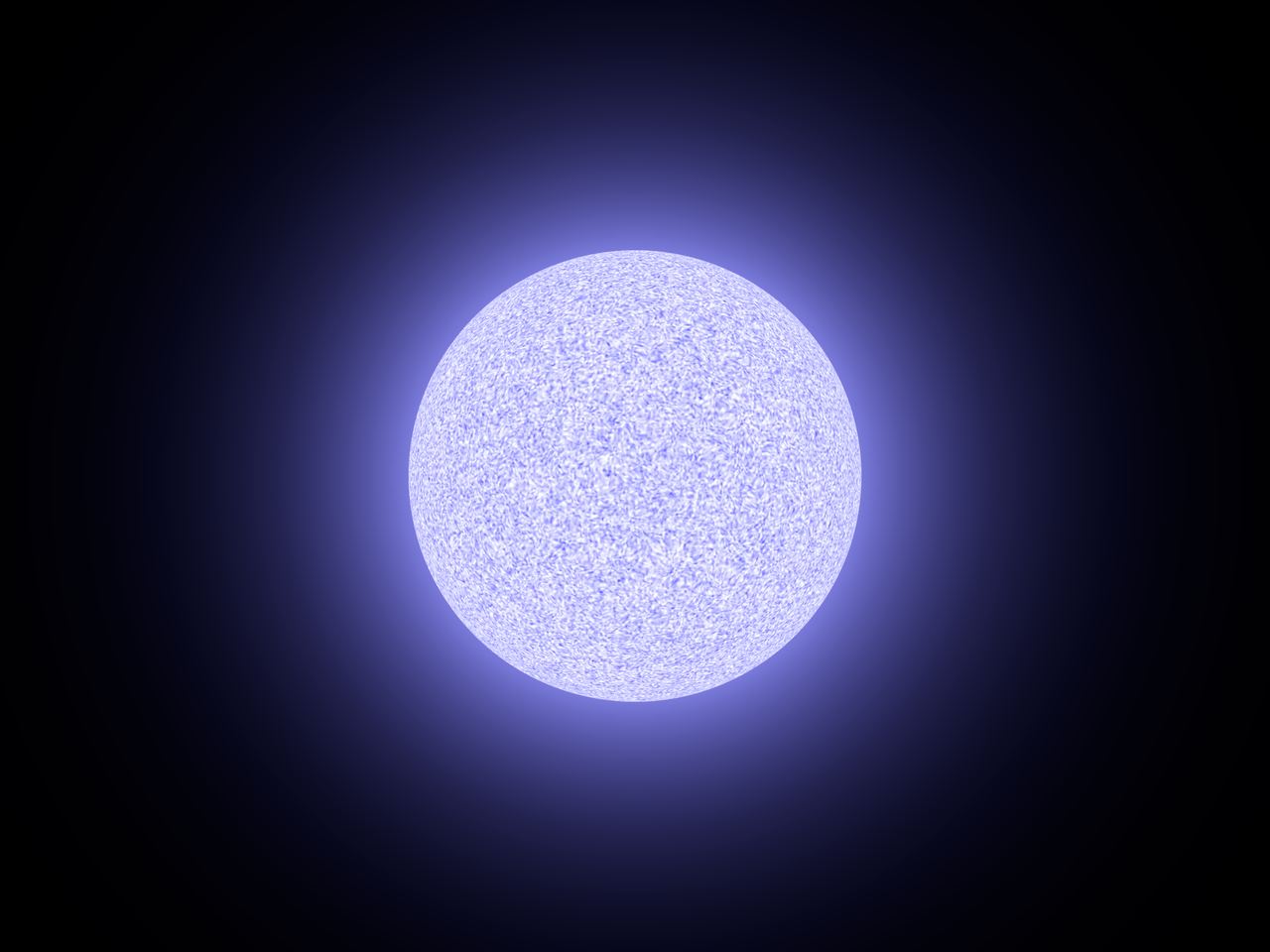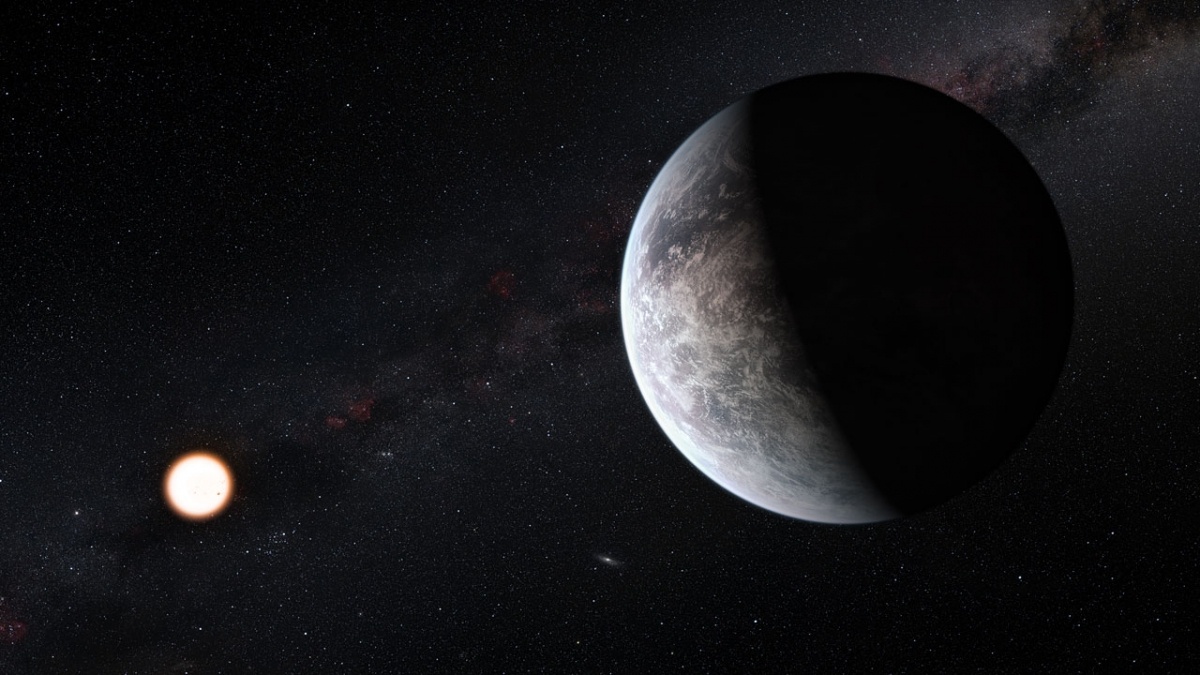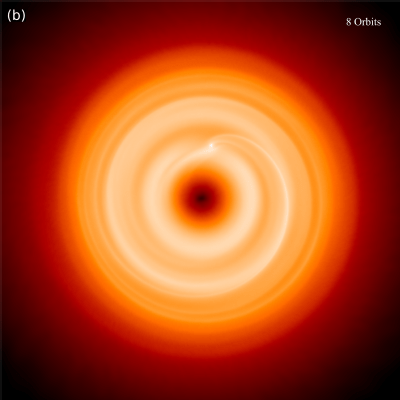90 percent of all exoplanets discovered to date (there are now more than 5000 of them) orbit around stars the same size or smaller than our sun. Giant stars seem to lack planetary companions, and this fact has serious implications for how we understand solar system formation. But is the dearth of planets around large stars a true reflection of nature, or is there some bias inherent in how we look for exoplanets that is causing us to miss them? The recent discovery of two gas giants orbiting a giant star called µ2 Scorpii suggests it might be the latter.
Continue reading “Even Stars Doomed to Die as Supernovae can Have Planets”Primordial Helium, Left Over From the Big Bang, is Leaking Out of the Earth
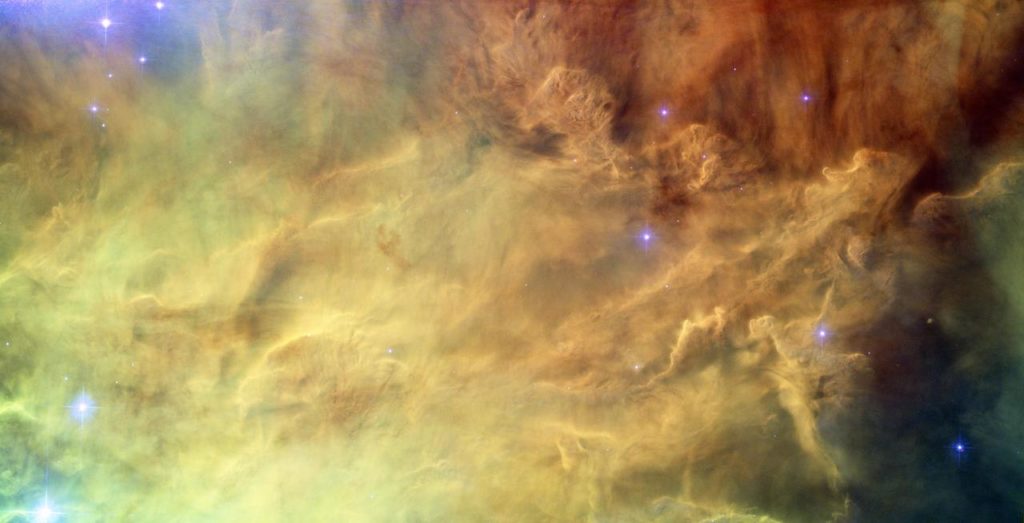
Something ancient and primordial lurks in Earth’s core. Helium 3 (3He) was created in the first minutes after the Big Bang, and some of it found its way through time and space to take up residence in Earth’s deepest regions. How do we know this?
Scientists can measure it as it slowly escapes.
Continue reading “Primordial Helium, Left Over From the Big Bang, is Leaking Out of the Earth”Planets Have Just Started to Form in This Binary System

Astronomers have watched the young binary star system SVS 13 for decades. Astronomers don’t know much about how planets form around proto-binary stars like SVS 13, and the earliest stages are especially mysterious. A new study based on three decades of research reveals three potentially planet-forming disks around the binary star.
Continue reading “Planets Have Just Started to Form in This Binary System”A Star Passed too Close and Tore Out a Chunk of a Protoplanetary Disk
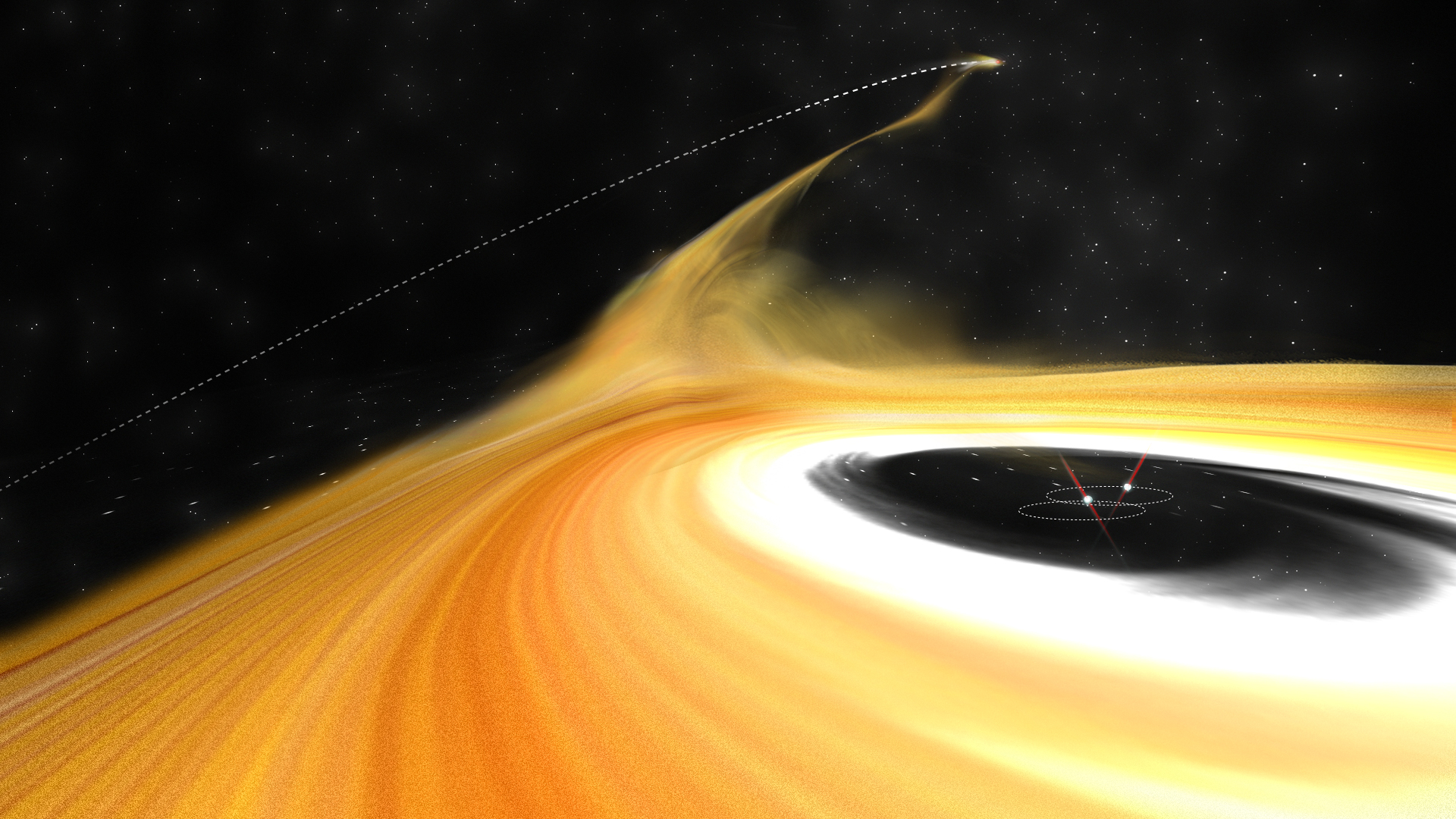
When it comes to observing protoplanetary disks, the Atacama Large Millimetre/sub-millimetre Array (ALMA) is probably the champion. ALMA was the first telescope to peer inside the almost inscrutable protoplanetary disks surrounding young stars and watch planets forming. ALMA advanced our understanding of the planet-forming process, though our knowledge of the entire process is still in its infancy.
According to new observations, it looks like chaos and disorder are part of the process. Astronomers using ALMA have watched as a star got too close to one of these planet-forming disks, tearing a chunk away and distorting the disk’s shape.
What effect will it have on planetary formation?
Continue reading “A Star Passed too Close and Tore Out a Chunk of a Protoplanetary Disk”This is How You Get Moons. An Earth-Sized World Just got Pummeled by Something Huge.
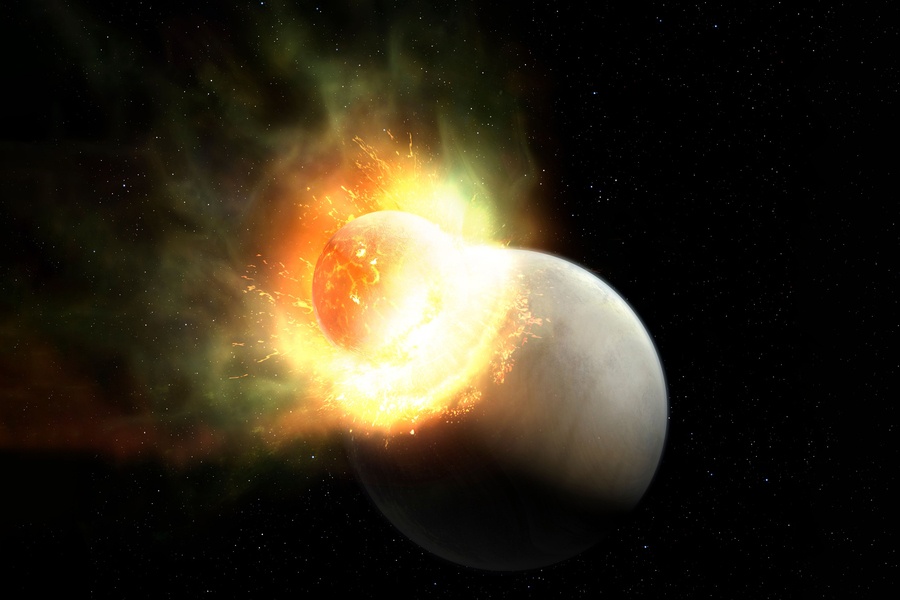
Titanic collisions are the norm in young solar systems. Earth’s Moon was the result of one of those collisions when the protoplanet Theia collided with Earth some 4.5 billion years ago. The collision, or series of collisions, created a swirling mass of ejecta that eventually coalesced into the Moon. It’s called the Giant Impact Hypothesis.
Astronomers think that collisions of this sort are a common part of planet formation in young solar systems, where things haven’t settled down into predictability. But seeing any of these collisions around other stars has proved difficult.
Continue reading “This is How You Get Moons. An Earth-Sized World Just got Pummeled by Something Huge.”Planets may Start Forming Before the Star is Even Finished

Planets form from the accumulation of countless grains of dust swirling around young stars. New computer simulations have found that planets begin forming earlier than previously thought, when a planet’s star hasn’t even finished forming yet.
Continue reading “Planets may Start Forming Before the Star is Even Finished”Primordial Asteroids That Never Suffered Massive Collisions all Seem to be Larger Than 100 km. Why?
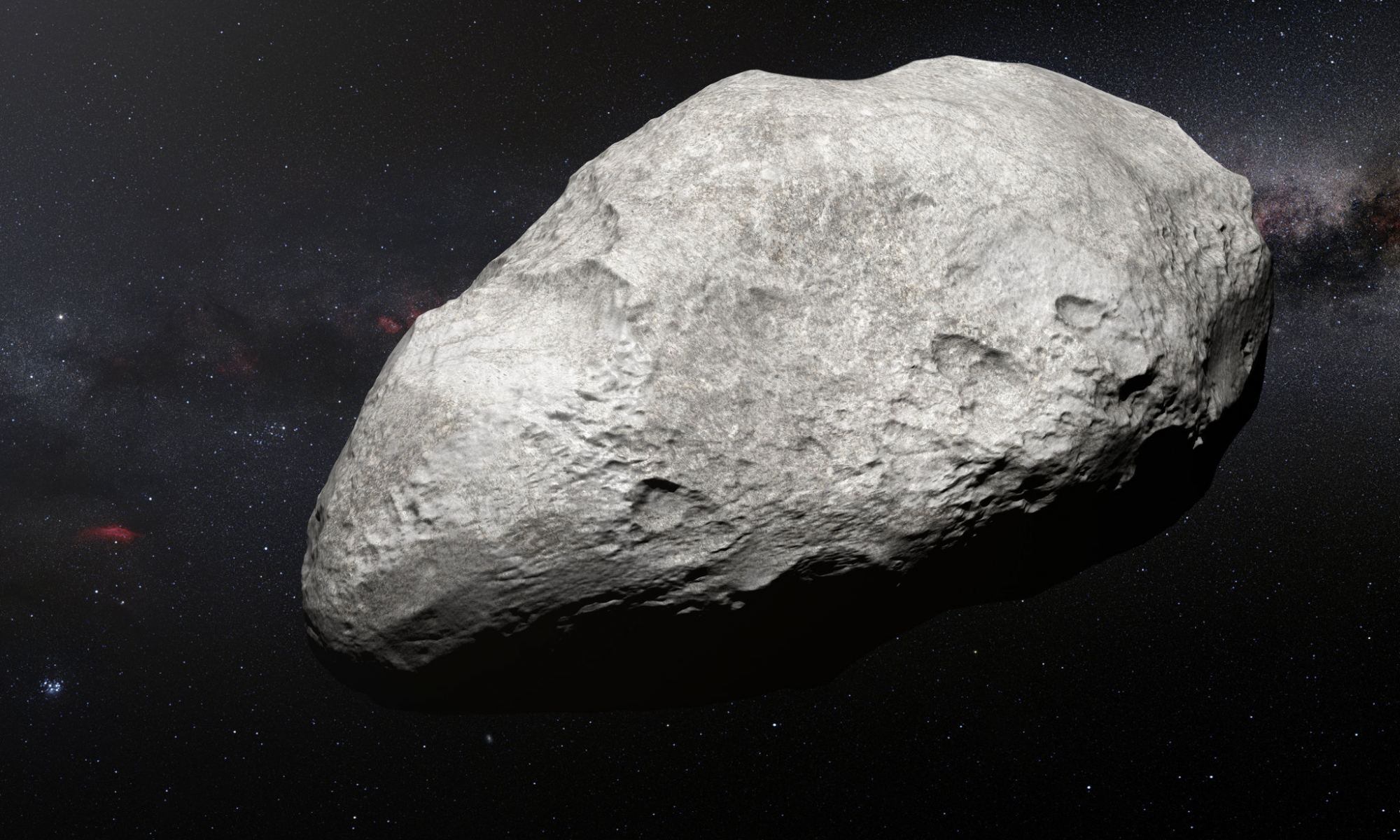
Planetary systems form out of the remnant gas and dust of a primordial star. The material collapses into a protoplanetary disk around the young star, and the clumps that form within the disk eventually become planets, asteroids, or other bodies. Although we understand the big picture of planetary formation, we’ve yet to fully understand the details. That’s because the details are complicated.
Continue reading “Primordial Asteroids That Never Suffered Massive Collisions all Seem to be Larger Than 100 km. Why?”It's Starting to Look Like Super-Earths Really are Just Great big Terrestrial Planets
We’ve learned a thing or two about exoplanets in the past several years. One of the more surprising discoveries is that our solar system is rather unusual. The Sun’s worlds are easily divided into small rocky planets and large gas giants. Exoplanets are much more diverse, both in size and composition.
Continue reading “It's Starting to Look Like Super-Earths Really are Just Great big Terrestrial Planets”Spiral-shaped Planetary Disks Should Be More Common. Giant Planets Might Be Disrupting Their Formation
Planetary system formation is a process that involves astounding and complex forces. Humans have only just started trying to understand what goes on in this extraordinarily important phase of the development of new worlds. As such, we are continuing to make new discoveries and come up with better models that better fit the observations that our instruments are able to collect.
The most recent of those improved models was announced by a research team at the University of Warwick. A paper in Astrophysical Journal Letters explores possible reasons for why there is a lack of spiral structures in newly formed protoplanetary discs. Their answer is a simple one: massive planets that form on the outside of the disc might be disrupting the spiral formation.
Continue reading “Spiral-shaped Planetary Disks Should Be More Common. Giant Planets Might Be Disrupting Their Formation”Huge Stars Can Destroy Nearby Planetary Disks
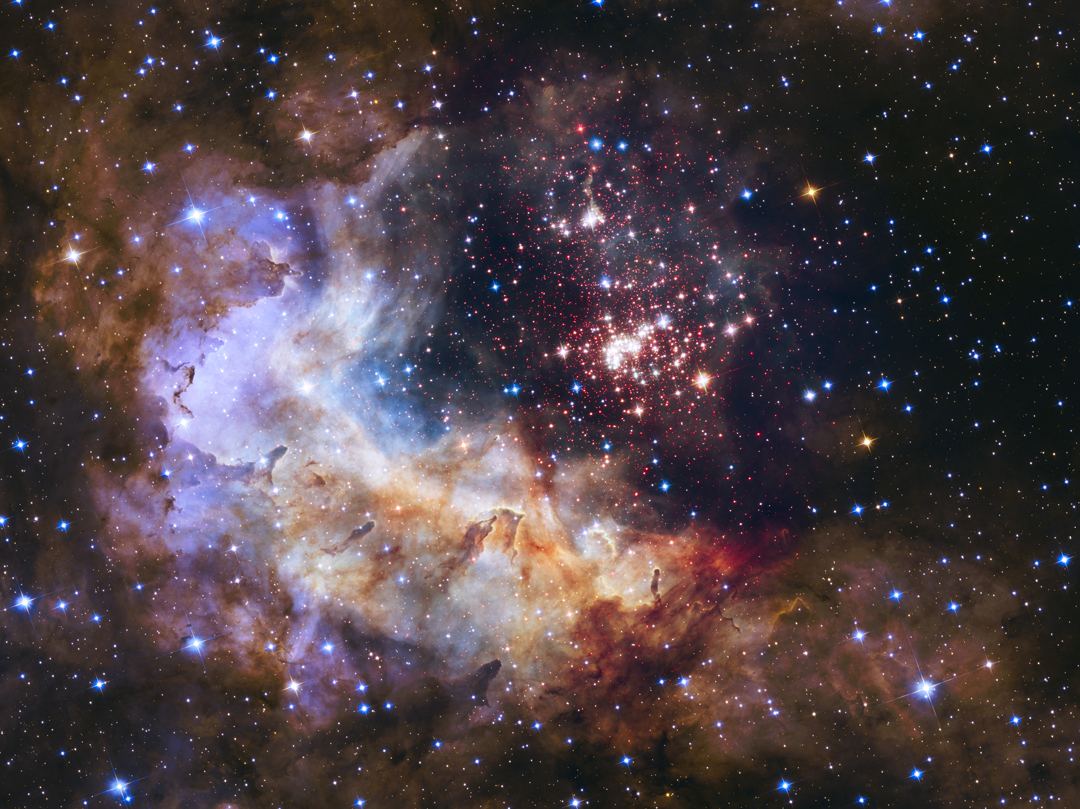
Westerlund 2 is a star cluster about 20,000 light years away. It’s young—only about one or two million years old—and its core contains some of the brightest and hottest stars we know of. Also some of the most massive ones.
There’s something unusual going on around the massive hot stars at the heart of Westerlund 2. There should be huge, churning clouds of gas and dust around those stars, and their neighbours, in the form of circumstellar disks.
But in Westerlund 2’s case, some of the stars have no disks.
Continue reading “Huge Stars Can Destroy Nearby Planetary Disks”
